wimpel69
01-12-2019, 01:35 PM
Please request the FLAC link (incl. covers & booklet) in this thread.
PM's will be ignored. Limited sharing period.
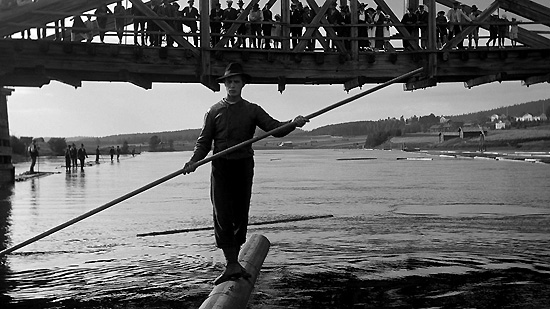

The Song of the Scarlet Flower (S�ngen om den eldr�da blomman) is a Swedish drama film from 1919 directed by famed
silent movie maker Mauritz Stiller. The main roles are Lars Hanson, Edith Erastoff, Greta Almroth and Lillebil Ibsen.
The film was recorded at Svenska Biografteatern's studio at Liding� with exterior scenes from Fax�lven at L�ngsele, Sollefte�.
The film premiered on April 14, 1919. It became a great audience success. It was played five weeks at the premiere cinema
R�da Kvarn in Stockholm, something that never happened before and the net profit on the film was at least SEK 80,000,
the biggest profit so far for any Swedish film.
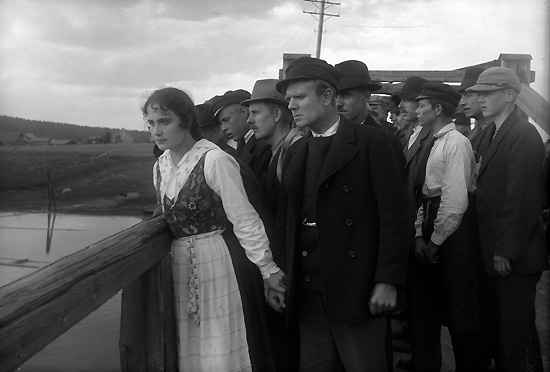
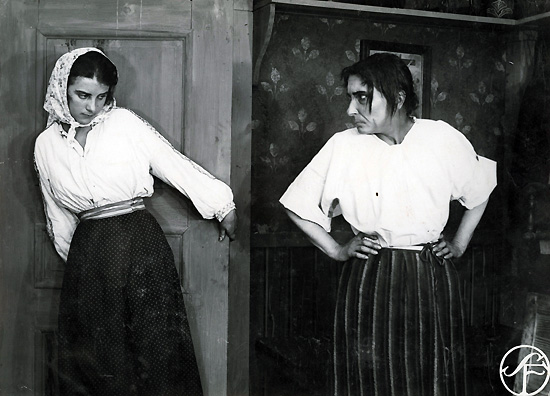
Armas J�rnefelt's score is in a late romantic, profoundly "Scandinavian" style.
If you like Jean Sibelius's music at all, you'll like this one, too. :)

Music Composed by
Armas J�rnefelt
Completed & Reconstructed by
Jani Kyll�nen
Jaakko Kuusisto
Played by the
G�vle Symphony Orchestra
Conducted by
Jaakko Kuusisto

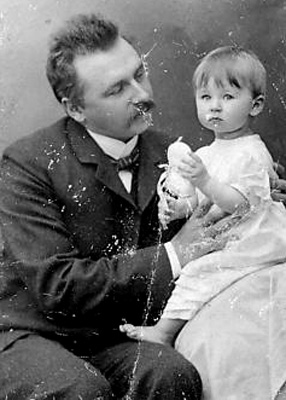
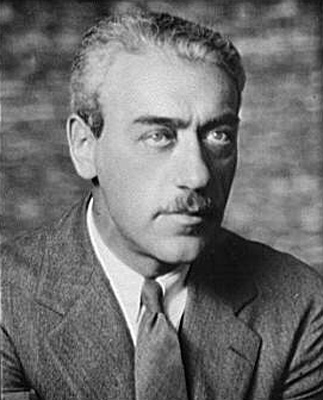
Armas J�rnefelt, Mauritz Stiller.
"Edward Armas J�rnefelt was born in Viborg on 14 August 1869 to August Alexander J�rnefelt (1833-1896)
and Elisabeth J�rnefelt, n�e Clodt von J�rgensburg (1839-1929).
His elder siblings were Kasper (1859-1941), a lecturer, translator and art critic; Arvid (1861-1932), an author; Erik (Eero),
(1863-1937), a painter; Ellida (Liida, 1865-1885) and Ellen (Elli, 1867-1901). After Armas, the couple had three more
children: Aino (1871-1969), who would marry Jean Sibelius; Hilja (1873-1879) and Sigrid (Siiri) (1875-1876).
In 1870, the family relocated to Helsinki, and young Armas began formal schooling at a Finnish grammar school. In 1884
the father J�rnefelt was appointed Governor of Kuopio Province, leading to a move to Kuopio where Armas J�rnefelt finished
high school at the Kuopio Lyceum. After his graduation, he undertook studies at the Helsinki Institute of Music (Helsingin
musiikkiopisto) under the direction of Martin Wegelius. It is here that J�rnefelt made the acquaintance of two significant
fellow students, the composer Jean Sibelius (1865-1957), four years his senior, and his wife-to-be, the soprano Maikki
Pakarinen (1871-1929). After completing his studies in the fall of 1890, J�rnefelt headed to Berlin for further study with
Albert Becker. Two years later he went to Paris to study with Jules Massenet. On 25 August 1893, Armas J�rnefelt and
Maikki Pakarinen were married in Joensuu. From 1895 to 1898, the couple toured the opera houses of Germany (Breslau,
Magdeburg, Berlin, D�sseldorf, Bremen, Hamburg, and Dresden) with Maikki as a featured soloist, while Armas worked
as a r�p�titeur or assistant orchestral conductor. They also returned frequently to Finland in these years to give concerts.
From 1898 to 1903 J�rnefelt was conductor of the Wiborg Musikv�nners Orchestra (the Viborg Friends of Music Orchestra).
In the following years he arranged opera weeks in Helsinki (1904-06) at the newly built National Theatre, with Maikki
singing the leading roles. These weeks focused on the works of Richard Wagner, and under J�rnefelt�s conductorship
Die Walk�re received its first full performance in Finland.
During the 1905-06 season, Armas J�rnefelt took a position as music director of the Royal Theatre (Kungliga Teatern)
in Stockholm (later known as the Royal Opera - Kungliga Operan). After the sudden death of Martin Wegelius in March
of 1906, J�rnefelt accepted the post of director at the Helsinki Music Institute. However, the following spring there was
such demand for J�rnefelt in Stockholm that he agreed to return as music director of the Royal Theatre for a period that
would eventually span the next quarter of a century.
In 1907, as J�rnefelt was starting his position at the Royal Opera, his wife was striving to make a name for herself in
Italian opera under the stage name Maria Campoferro. The tensions of two careers eventually led to the couple�s
divorce in 1908.
Curiously, both Eero and Armas used the name Campoferro when in Italy. Eero J�rnefelt used the signature
Erico Campoferro in some of his paintings, while on some of Armas J�rnefelt�s programmes, his name is printed
as Amato Campoferro
J�rnefelt met his second wife at the Royal Opera in Stockholm. Liva (Olivia) Edstr�m (1876-1971) and Armas were
married in Hanko, Finland, in 1910. Liva J�rnefelt, who had made her debut in 1896, left the Opera in 1926.
A few years later, at the end of the 1931-32 season, Armas J�rnefelt, then 63 years of age, left his position at the
Royal Opera after twenty-five years of service. His final performances were of Hans Pfitzner�s Das Herz. In the autumn
of 1932 J�rnefelt was employed by the Finnish Opera, where he remained until 1936. The total number of performances
J�rnefelt conducted at the Finnish Opera, both as music director and as a guest conductor, amounted to 270.
In 1936, after his period with the Finnish Opera was over, J�rnefelt moved back to Stockholm. From there he made
concert tours to various parts of Sweden as well as Finland, conducting opera performances as well as orchestral concerts.
On 30 November 1939, the Soviet Union declared war on Finland with a surprise bombing attack on Helsinki.
The conductor of the Helsinki Philharmonic Orchestra at the time, Georg Schn�evoigt, fled the country, and his
chosen successor, Tauno Hannikainen, refused to return from America. Armas J�rnefelt, then 70 years old, was
invited to lead the Helsinki Philharmonic Orchestra, first as guest conductor and later as music director. From his base
in Stockholm, he came to Helsinki to lead forty concerts. The last among these was a special event arranged to
celebrate the ceasefire. On this occasion J�rnefelt conducted Sibelius�s Fifth Symphony, concluding the program
with a work of his own, the cantata Is�nmaan kasvot (The Face of the Fatherland).
The last time J�rnefelt lifted his baton was to lead the massive symphony orchestra comprised of musicians from
both the Helsinki Philharmonic Orchestra and the Radio Symphony Orchestra in honour of Jean Sibelius�s 85th
birthday. He himself had then reached the age of 81."
Source: Ondine CD (My rip!)
Format: FLAC(WinRar), DDD Stereo
File Size: 428 MB (incl. covers & booklet)
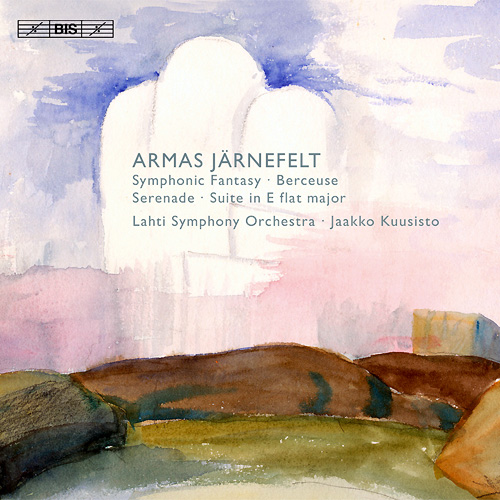
Bonus album
Armas J�rnefelt:
Symphonic Fantasy
Suite in E-Flat
Serenade
Berceuse
Please request the FLAC link (incl. covers & booklet) in this thread.
PM's will be ignored. Limited sharing period.
Please do not share further and add to my reputation if you download my material. Thank you! :)
PM's will be ignored. Limited sharing period.


The Song of the Scarlet Flower (S�ngen om den eldr�da blomman) is a Swedish drama film from 1919 directed by famed
silent movie maker Mauritz Stiller. The main roles are Lars Hanson, Edith Erastoff, Greta Almroth and Lillebil Ibsen.
The film was recorded at Svenska Biografteatern's studio at Liding� with exterior scenes from Fax�lven at L�ngsele, Sollefte�.
The film premiered on April 14, 1919. It became a great audience success. It was played five weeks at the premiere cinema
R�da Kvarn in Stockholm, something that never happened before and the net profit on the film was at least SEK 80,000,
the biggest profit so far for any Swedish film.


Armas J�rnefelt's score is in a late romantic, profoundly "Scandinavian" style.
If you like Jean Sibelius's music at all, you'll like this one, too. :)

Music Composed by
Armas J�rnefelt
Completed & Reconstructed by
Jani Kyll�nen
Jaakko Kuusisto
Played by the
G�vle Symphony Orchestra
Conducted by
Jaakko Kuusisto



Armas J�rnefelt, Mauritz Stiller.
"Edward Armas J�rnefelt was born in Viborg on 14 August 1869 to August Alexander J�rnefelt (1833-1896)
and Elisabeth J�rnefelt, n�e Clodt von J�rgensburg (1839-1929).
His elder siblings were Kasper (1859-1941), a lecturer, translator and art critic; Arvid (1861-1932), an author; Erik (Eero),
(1863-1937), a painter; Ellida (Liida, 1865-1885) and Ellen (Elli, 1867-1901). After Armas, the couple had three more
children: Aino (1871-1969), who would marry Jean Sibelius; Hilja (1873-1879) and Sigrid (Siiri) (1875-1876).
In 1870, the family relocated to Helsinki, and young Armas began formal schooling at a Finnish grammar school. In 1884
the father J�rnefelt was appointed Governor of Kuopio Province, leading to a move to Kuopio where Armas J�rnefelt finished
high school at the Kuopio Lyceum. After his graduation, he undertook studies at the Helsinki Institute of Music (Helsingin
musiikkiopisto) under the direction of Martin Wegelius. It is here that J�rnefelt made the acquaintance of two significant
fellow students, the composer Jean Sibelius (1865-1957), four years his senior, and his wife-to-be, the soprano Maikki
Pakarinen (1871-1929). After completing his studies in the fall of 1890, J�rnefelt headed to Berlin for further study with
Albert Becker. Two years later he went to Paris to study with Jules Massenet. On 25 August 1893, Armas J�rnefelt and
Maikki Pakarinen were married in Joensuu. From 1895 to 1898, the couple toured the opera houses of Germany (Breslau,
Magdeburg, Berlin, D�sseldorf, Bremen, Hamburg, and Dresden) with Maikki as a featured soloist, while Armas worked
as a r�p�titeur or assistant orchestral conductor. They also returned frequently to Finland in these years to give concerts.
From 1898 to 1903 J�rnefelt was conductor of the Wiborg Musikv�nners Orchestra (the Viborg Friends of Music Orchestra).
In the following years he arranged opera weeks in Helsinki (1904-06) at the newly built National Theatre, with Maikki
singing the leading roles. These weeks focused on the works of Richard Wagner, and under J�rnefelt�s conductorship
Die Walk�re received its first full performance in Finland.
During the 1905-06 season, Armas J�rnefelt took a position as music director of the Royal Theatre (Kungliga Teatern)
in Stockholm (later known as the Royal Opera - Kungliga Operan). After the sudden death of Martin Wegelius in March
of 1906, J�rnefelt accepted the post of director at the Helsinki Music Institute. However, the following spring there was
such demand for J�rnefelt in Stockholm that he agreed to return as music director of the Royal Theatre for a period that
would eventually span the next quarter of a century.
In 1907, as J�rnefelt was starting his position at the Royal Opera, his wife was striving to make a name for herself in
Italian opera under the stage name Maria Campoferro. The tensions of two careers eventually led to the couple�s
divorce in 1908.
Curiously, both Eero and Armas used the name Campoferro when in Italy. Eero J�rnefelt used the signature
Erico Campoferro in some of his paintings, while on some of Armas J�rnefelt�s programmes, his name is printed
as Amato Campoferro
J�rnefelt met his second wife at the Royal Opera in Stockholm. Liva (Olivia) Edstr�m (1876-1971) and Armas were
married in Hanko, Finland, in 1910. Liva J�rnefelt, who had made her debut in 1896, left the Opera in 1926.
A few years later, at the end of the 1931-32 season, Armas J�rnefelt, then 63 years of age, left his position at the
Royal Opera after twenty-five years of service. His final performances were of Hans Pfitzner�s Das Herz. In the autumn
of 1932 J�rnefelt was employed by the Finnish Opera, where he remained until 1936. The total number of performances
J�rnefelt conducted at the Finnish Opera, both as music director and as a guest conductor, amounted to 270.
In 1936, after his period with the Finnish Opera was over, J�rnefelt moved back to Stockholm. From there he made
concert tours to various parts of Sweden as well as Finland, conducting opera performances as well as orchestral concerts.
On 30 November 1939, the Soviet Union declared war on Finland with a surprise bombing attack on Helsinki.
The conductor of the Helsinki Philharmonic Orchestra at the time, Georg Schn�evoigt, fled the country, and his
chosen successor, Tauno Hannikainen, refused to return from America. Armas J�rnefelt, then 70 years old, was
invited to lead the Helsinki Philharmonic Orchestra, first as guest conductor and later as music director. From his base
in Stockholm, he came to Helsinki to lead forty concerts. The last among these was a special event arranged to
celebrate the ceasefire. On this occasion J�rnefelt conducted Sibelius�s Fifth Symphony, concluding the program
with a work of his own, the cantata Is�nmaan kasvot (The Face of the Fatherland).
The last time J�rnefelt lifted his baton was to lead the massive symphony orchestra comprised of musicians from
both the Helsinki Philharmonic Orchestra and the Radio Symphony Orchestra in honour of Jean Sibelius�s 85th
birthday. He himself had then reached the age of 81."
Source: Ondine CD (My rip!)
Format: FLAC(WinRar), DDD Stereo
File Size: 428 MB (incl. covers & booklet)

Bonus album
Armas J�rnefelt:
Symphonic Fantasy
Suite in E-Flat
Serenade
Berceuse
Please request the FLAC link (incl. covers & booklet) in this thread.
PM's will be ignored. Limited sharing period.
Please do not share further and add to my reputation if you download my material. Thank you! :)